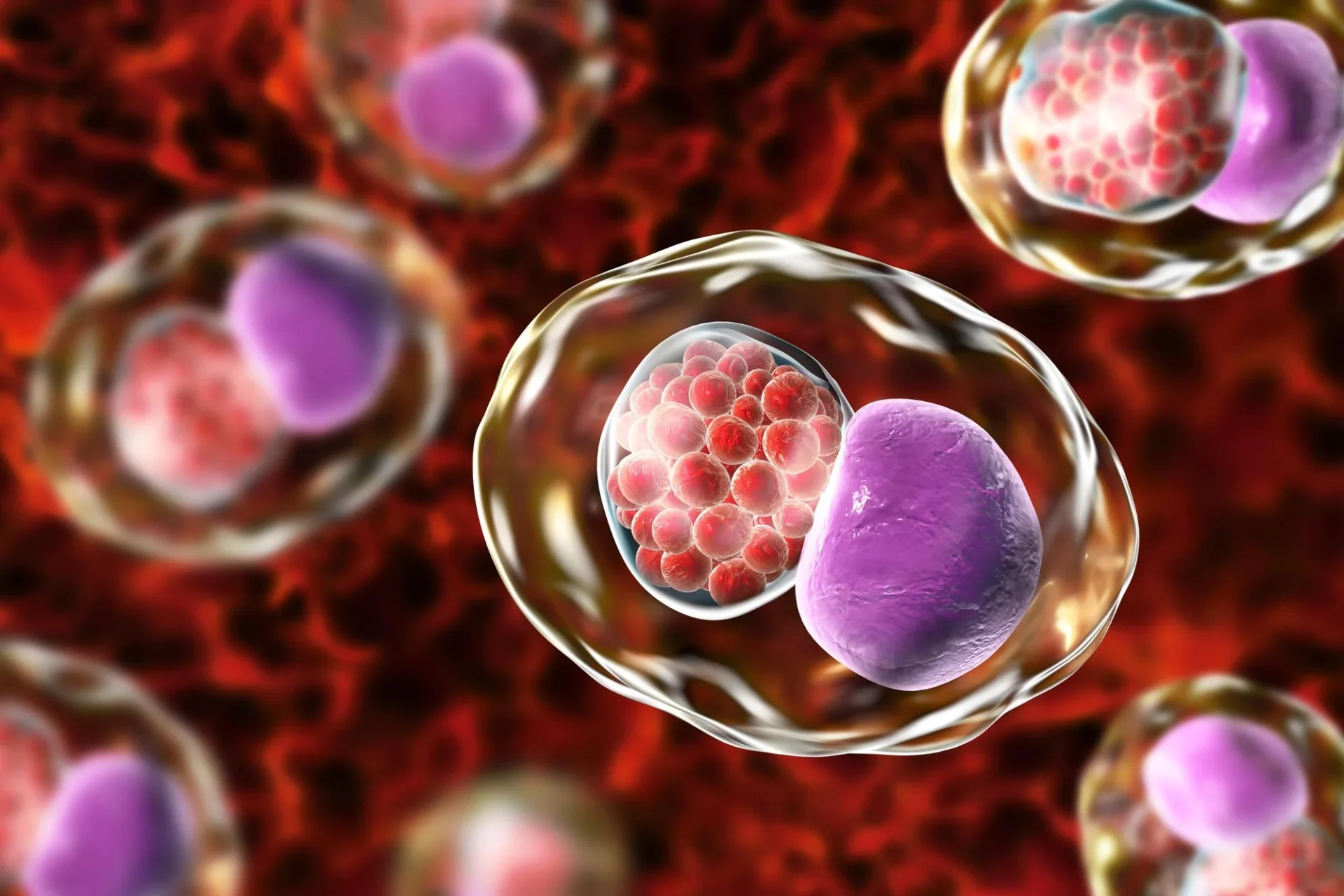Understanding Chlamydia: The Silent Threat in Sexual Health

In today’s fast-paced world, it’s easy to overlook the silent threats that lurk in our sexual health. One such threat is the prevalent and often asymptomatic infection known as Chlamydia. With its sneaky nature, Chlamydia silently spreads, affecting millions worldwide. But what exactly is Chlamydia and why is it a concern? This article aims to shed light on this commonly misunderstood sexually transmitted infection (STI). Chlamydia is caused by the bacterium Chlamydia trachomatis and can be transmitted through sexual activity, including vaginal, anal, and oral sex. What makes it especially concerning is the fact that it often presents no symptoms, leading many to remain unaware of their infection. Left untreated, Chlamydia can have severe consequences, including fertility issues and an increased risk of other STIs. By understanding Chlamydia, its transmission, symptoms (or lack thereof), and the importance of regular testing and treatment, we can empower ourselves with the knowledge necessary to protect our sexual health. Join us as we delve into the world of Chlamydia and equip ourselves with the information needed to combat this silent threat. What is Chlamydia? Chlamydia is caused by the bacterium Chlamydia trachomatis and can be transmitted through sexual activity, including vaginal, anal, and oral sex. It is one of the most common STIs globally, with millions of new cases reported each year. What makes Chlamydia especially concerning is the fact that it often presents no symptoms, leading many to remain unaware of their infection. This silent nature of Chlamydia can contribute to its widespread transmission and long-term health consequences if left untreated. Chlamydia is primarily transmitted through unprotected sexual contact with an infected individual. The bacteria can infect the urethra, cervix, rectum, or throat. It can also be passed from an infected mother to her baby during childbirth. While Chlamydia can affect anyone, young people, particularly those between the ages of 15 and 24, are at a higher risk of infection. Prevalence and impact of Chlamydia Chlamydia is a global health concern, with millions of new cases reported each year. According to the World Health Organization (WHO), an estimated 127 million new cases of Chlamydia occur annually. However, this number likely underestimates the true prevalence, as many cases go undiagnosed and unreported due to the lack of symptoms. The impact of Chlamydia goes beyond the immediate discomfort and inconvenience it may cause. Untreated Chlamydia can have severe consequences, especially for women. In women, Chlamydia can lead to pelvic inflammatory disease (PID), which can cause chronic pelvic pain, infertility, and an increased risk of ectopic pregnancy. In men, untreated Chlamydia can result in epididymitis, which can lead to testicular pain and, in rare cases, infertility. Signs and symptoms of Chlamydia One of the concerning aspects of Chlamydia is that it often presents no symptoms or mild symptoms that can easily be mistaken for other conditions. This means that many individuals may unknowingly carry and transmit the infection. When symptoms do occur, they typically manifest within one to three weeks after exposure. Common symptoms in women include abnormal vaginal discharge, pain during urination, and abdominal or pelvic pain. Men may experience discharge from the penis, burning or itching sensation during urination, and testicular pain. However, it’s important to note that these symptoms can vary or be absent altogether, making regular testing crucial for early detection and treatment. How is Chlamydia diagnosed? Diagnosing Chlamydia involves various methods, including laboratory testing. The most common diagnostic method is a urine test, which can detect the presence of Chlamydia DNA. Additionally, swabs may be taken from the cervix, urethra, rectum, or throat to collect samples for testing. These samples are then analyzed in a laboratory to determine the presence of Chlamydia. It’s important to remember that routine testing for Chlamydia is not typically included in regular check-ups or screenings, unless specifically requested. Individuals who are sexually active, particularly those with multiple partners or who engage in unprotected sex, should proactively seek testing to ensure early detection and treatment if necessary. Potential complications of untreated Chlamydia While Chlamydia may seem like a relatively harmless infection due to its lack of symptoms, untreated Chlamydia can lead to serious health complications. As mentioned earlier, women are particularly at risk for developing pelvic inflammatory disease (PID), which can cause long-term damage to the reproductive organs and increase the chances of infertility. In some cases, Chlamydia can also increase the risk of miscarriage or preterm birth. For men, untreated Chlamydia can result in epididymitis, a painful condition that affects the epididymis, the tube that carries sperm from the testicles. If left untreated, epididymitis can lead to testicular abscesses or even permanent damage to the reproductive system. Preventing Chlamydia transmission Preventing Chlamydia transmission requires a combination of safe sexual practices, open communication, and regular testing. The use of barrier methods, such as condoms or dental dams, can significantly reduce the risk of Chlamydia transmission during sexual activity. It’s important to note that while condoms provide a level of protection, they do not eliminate the risk entirely, as Chlamydia can be present in areas not covered by the condom. Open and honest communication with sexual partners is also crucial in preventing the spread of Chlamydia. Discussing sexual health, previous STI testing, and using protection can help reduce the risk of infection. Regular testing is key to early detection and treatment of Chlamydia. Testing should be done regularly, especially for individuals with multiple sexual partners or those who engage in unprotected sex. It’s also important to note that Chlamydia can be present in areas not typically associated with sexual activity, such as the throat or rectum. Therefore, individuals engaging in oral or anal sex should also consider getting tested regularly. Treatment options for Chlamydia Fortunately, Chlamydia is a treatable infection. The most common treatment for Chlamydia is a course of antibiotics, typically taken orally. It’s crucial to complete the full course of antibiotics as prescribed, even if symptoms improve or disappear before completing the treatment. This ensures the complete eradication of the infection and reduces the risk
Common Symptoms of Sexually Transmitted Diseases

Are you experiencing discomfort or unusual symptoms “down there”? It’s not something to ignore. Sexually transmitted diseases (STDs) are more common than you might think and can have serious consequences if left untreated. Recognizing the common symptoms is crucial for early diagnosis and effective treatment. In this blog, we will explore the important signs and symptoms of sexually transmitted diseases that you should never ignore. From painful urination and abnormal discharge to itching and sores, the symptoms of STDs can vary greatly. These signs may not always be visible, and some individuals may even be asymptomatic, which makes regular testing even more crucial. By familiarizing yourself with the common symptoms, you can take your health into your own hands and seek medical attention if necessary. Remember, timely diagnosis and treatment are key in managing and preventing the spread of sexually transmitted diseases. So, don’t brush off any potential indications. Stay informed, protect yourself, and seek medical advice if you have any concerns. Let’s delve into the common symptoms of STDs and empower ourselves with knowledge for a healthy future. Why it is important to recognize the symptoms of STDs Recognizing the symptoms of sexually transmitted diseases is crucial for several reasons. Firstly, early diagnosis allows for prompt treatment, which can help prevent long-term complications and reduce the risk of transmission to others. Additionally, being aware of the symptoms can help individuals make informed decisions about their sexual health and seek appropriate medical care when needed. Common Symptoms of STDs in Men Men may experience various symptoms when infected with an STD. One of the most common symptoms is a discharge from the penis, which may be accompanied by a burning sensation during urination. Other signs include genital sores, swelling or pain in the testicles, and itching or irritation in the genital area. Certain STDs, such as gonorrhea and chlamydia, may cause symptoms that are similar to those of a urinary tract infection. These symptoms can include frequent urination, a strong urge to urinate, and a cloudy or bloody urine. It is important for men to be vigilant and seek medical attention if they experience any of these symptoms. Symptoms of specific STDs – Chlamydia, Gonorrhea, Syphilis, Herpes, HPV, HIV/AIDS Chlamydia is one of the most common sexually transmitted infections and can often be asymptomatic. However, when symptoms do occur, they may include abnormal discharge, painful urination, and pain or swelling in the testicles. It is important to note that chlamydia can also infect the rectum or throat, leading to symptoms such as rectal pain, discharge, or a sore throat. Gonorrhea, another common STD, can cause symptoms such as a thick, cloudy discharge from the penis, painful urination, and swollen testicles. In some cases, gonorrhea can also lead to rectal infections, resulting in symptoms like anal itching, discharge, or pain. Syphilis is a bacterial infection that progresses in stages. The initial stage is characterized by a painless sore called a chancre, which may go unnoticed. The second stage involves a rash, fever, sore throat, and swollen lymph nodes. If left untreated, syphilis can progress to the third stage, causing serious complications such as organ damage and neurological problems. Herpes is a viral infection that can cause painful sores or blisters in the genital area. These sores can be accompanied by flu-like symptoms such as fever, body aches, and swollen lymph nodes. It is important to note that herpes can be transmitted even when there are no visible sores. HPV (human papillomavirus) infections often do not cause symptoms, but certain strains can lead to genital warts. These warts may appear as small, flesh-colored bumps or clusters in the genital area. In some cases, HPV infections can also lead to abnormal cell changes in the cervix, which may be detected through routine Pap smears. HIV/AIDS is a viral infection that affects the immune system. In the early stages of HIV infection, individuals may experience flu-like symptoms such as fever, fatigue, and swollen lymph nodes. As the infection progresses to AIDS, more severe symptoms may occur, including weight loss, chronic diarrhea, and opportunistic infections. When to see a doctor if you suspect you have an STD If you suspect you have an STD or have been exposed to one, it is important to seek medical attention and get tested as soon as possible. Some STDs may not cause noticeable symptoms, but can still be transmitted to others and lead to long-term complications if left untreated. Additionally, early diagnosis and treatment can help prevent the spread of STDs and reduce the risk of developing serious health issues. How to get tested for STDs Getting tested for STDs is a straightforward process that can be done at a healthcare provider’s office, clinic, or through at-home testing. The specific tests required may vary depending on the suspected STD and individual circumstances. Common methods of testing include urine tests, blood tests, swabs of affected areas, and Pap smears for cervical cancer screening. Treatment options for STDs The treatment options for sexually transmitted diseases vary depending on the specific infection. Bacterial STDs, such as chlamydia and gonorrhea, can often be treated with antibiotics. Viral STDs, such as herpes and HIV, have no cure, but antiviral medications can help manage symptoms and reduce the risk of transmission. It is important to follow the prescribed treatment regimen and complete the full course of medication, even if symptoms improve. Preventing the spread of STDs Prevention is key when it comes to sexually transmitted diseases. Practicing safe sex by using condoms consistently and correctly can greatly reduce the risk of transmission. It is also important to communicate openly with sexual partners about STDs and get tested regularly. Vaccines are available for certain STDs, such as HPV, and can provide protection against infection. Additionally, avoiding high-risk behaviors, such as sharing needles, can help prevent the spread of STDs. Conclusion and the importance of regular STD testing In conclusion, recognizing the common symptoms of sexually transmitted diseases is essential for early diagnosis and effective
The Benefits of In-Home Physical Therapy

The Benefits of In-Home Physical Therapy I. Introduction Physical therapy is an important aspect of rehabilitation for many people who have suffered from an injury,
Understanding the Importance of Senior Care

Understanding the Importance of Senior Care Introduction As our loved ones age, their needs change, requiring specialized care and support to maintain their health, well-being,
